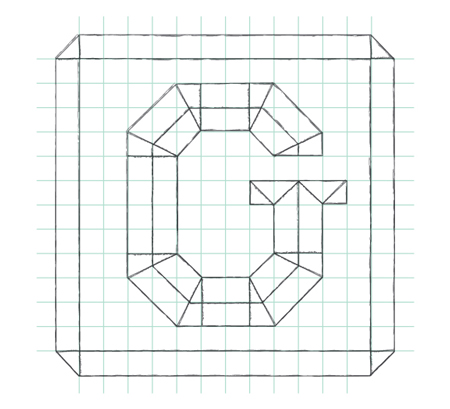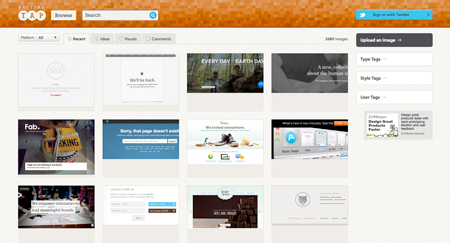As a designer, your work life shouldn’t be too bad and the projects you work on for clients might even fulfill you. In that case, why should you even bother with a side project when everything is fine, do you really need the extra work load? Well, before anything, there are slow times in the designer’s schedule, so you might as well use those to create something meaningful. But actually, that’s not the real reason why you should create side projects. Let’s look into it.
Side projects are fun!
This should be the first reason you start a side project, you have a cool idea and want to see it live. Enthousiasm can be a very strong driving force to be creative and persevere in your project.
Whether it’s humorous, artistic or experimental, your side work will take you out of your routing and give you an extremely satisfying feeling.

Daily Drop Cap is a side project by Jessica Hische.
You can experiment
We all know that constraints are good and force you to think different to overcome design problems. For that matter, client work is great and very challenging. Who doesn’t love integrating a shitty logo in web pages mockups?
For side projects, you don’t have any constraint. Actually you do, you have some limits due to the techniques related to the project you are creating, but you don’t have any limit imposed by your client’s mood or his existing corporate identity. This means that you are free to do pretty much anything you want.
Do you love typography and want to create experimental typefaces using concrete, go ahead! You love to create illustrations but don’t have any client work that give you the opportunity to draw, take your first novel and draw the hell out of it. Your favorite director didn’t hire you to design posters for his movies, doesn’t matter, you can do it anyway.
In my opinion, side projects become really interesting when designers are mixing their passion with another one. Combining graphic design with gardening, typography with cooking or art with architecture, that’s what takes side projects to a whole new level.
So don’t be afraid, experiment and try creating new stuff, if you fail nobody will see it anyway, and if you succeed you might get new work out of it.
You will improve
By creating your side project, you will probably approach new creative fields that you don’t have the opportunity to experiment with, thus helping you develop new skills. Obviously those new skills will not be lost and will be useful in your design career.
For example, if you decide to create a font, a common side project for graphic designers, you will get a first hand look at how things are done and at the kind of problems typographers meet. I’m a strong believer in practical experience versus theory. If you want to learn how to snowboard, you can read ten books you will still not be able to do it, sooner or later you’ll have to climb on a snowboard and fall down a few times. I’m not saying here that theory is bad, I’m just saying that it’s not enough.

PatternTap is an online gallery started as a side project by Matthew Smith.
It helps to build your portfolio
This is strongly related to the previous point. A finished side project is a great addition to your portfolio. It shows a more creative side of you and some other skills that you can not show in your regular work. As you all know, a strong portfolio is one of the best tools for a designers to find new gigs.
This point is obviously particularly important for design students or for designers who have little to show in their portfolio.
It makes self-promotion easier
Many designers are reluctant to self-promote, it often feels like whoring yourself out. Creating side projects usually generates enough passion for you to talk about your work enthusiastically.
The other side of self-promotion happens online. If you tried to get featured on design blogs, it will definitely be much easier to do with a cool set of posters you designed than with the latest swimming pool brochure you have layed out. There nothing wrong with swimming pool brochures of course, they’re just rarely as exciting as experimental projects.
You can make an extra income
This all depends on the type of side project you’ll dedicate your time to. For example if you create posters, prints or t-shirts, you can sell those products. For web designers, creating useful sites, web services or applications can be a way to get a recurring income.

The Shape of Design is Franck Chimero’s side project.
Conclusion
As you can see in this article, there are almost only advantages to creating side projects. The only downside being that it can be time-consuming, but if you worry about that, just spend a little less time on social media sites or on watching tv, it’s well worth it.

